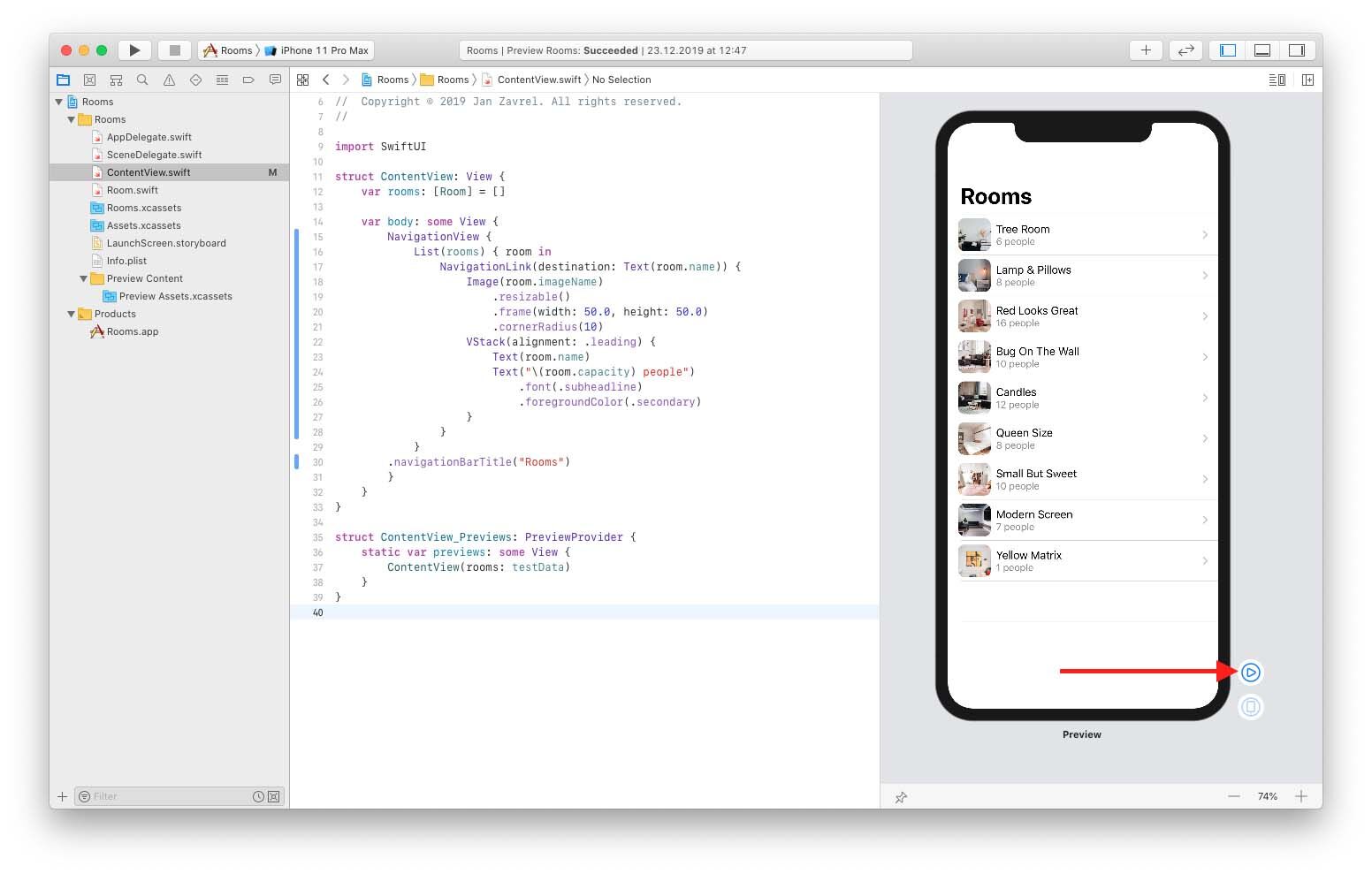
#SWIFTUI VSTACK TOP OF SCREEN FULL#
The full source code for this can be found here. This is what it looks like after we add the frame view modifier to the Text view: ConclusionĪnd that is it! SwiftUI makes it incredibly easy to have a child view fill the parent view, but, when doing this, keep in mind the order of the view modifiers. To work correctly, a NavigationLink needs to be nested inside a NavigationView. NavigationLink is similar to a Button, but it triggers presenting a new view in the navigation stack when it's pressed. Heres my code: Solution: The problem seems to be because of, which tries to preserve the images aspect ratio and so doesnt make the background extend all the way.

The hidden feature of the TabView is that we can use it to show the multiple tabs with page indicators, and those can be controlled by scrolling between them. NavigationView is SwiftUI's version of UINavigationController: It manages a stack of views and shows a navigation bar on top of them. Make a VStack fill the width of the screen in SwiftUI swiftui background color Question: I am trying to prevent the background of my HStack from going into my safearea. It allows us to add the tab view and control the currently selected tab programmatically. all) It will look this like now: This is how easy it is to let a SwiftUI view fill the entire screen. If you want your view to ignore safe area, you can add the following line of code below the. This is the result: As you can see, VStack arranges the Text (), HStack, and Zstack as a top-to-bottom list. The safe area at the top and the bottom of the screen are still white. Each of them have views inside, like Text () and Image (). In the example below, you will see a combination of VStack, HStack, and ZStack. To make the Text view fill up the parent view, we can add the following line inbetween the forgroundColor and background view modifiers. With SwiftUI, this element now has the new name TabView. A good way to achieve this is using a combination of Stacks. Then select SwiftUI View in the window that appears. Right-click on the QuickbloxSwiftUIChat project folder.
#SWIFTUI VSTACK TOP OF SCREEN HOW TO#
We can also see that the Text view is centered and small. Here’s how to start building do this: First, create a new file and name it Login Screen. This is what the above code looks like when I run it:Īs we can see, we have a VStack where the frame has a width of 200 and a height of 200. border(Color.red, width: 1) // Set VStack border to make it visible frame(width: 200, height: 200) // Set VStack frame width and height I am going to start off with a very basic layout, the code will look like this: struct ContentView: View.

infinity when using the frame view modifier. TLDR: To make a view fill the screen or parent view, you can set the maxHeight and maxWidth to. swift get device screen size get tabbar height swift swiftui navigationview ignore top space swift scrollview auto fit content height set image width and. Luckily for us SwiftUI makes this very easy to do. It is often required that a view fill a space, whether it is width, height or both. In this tutorial I will show you how to make a view fill the width or height of the parent view or fill the screen.


 0 kommentar(er)
0 kommentar(er)
